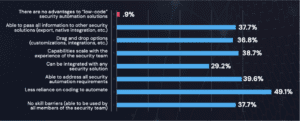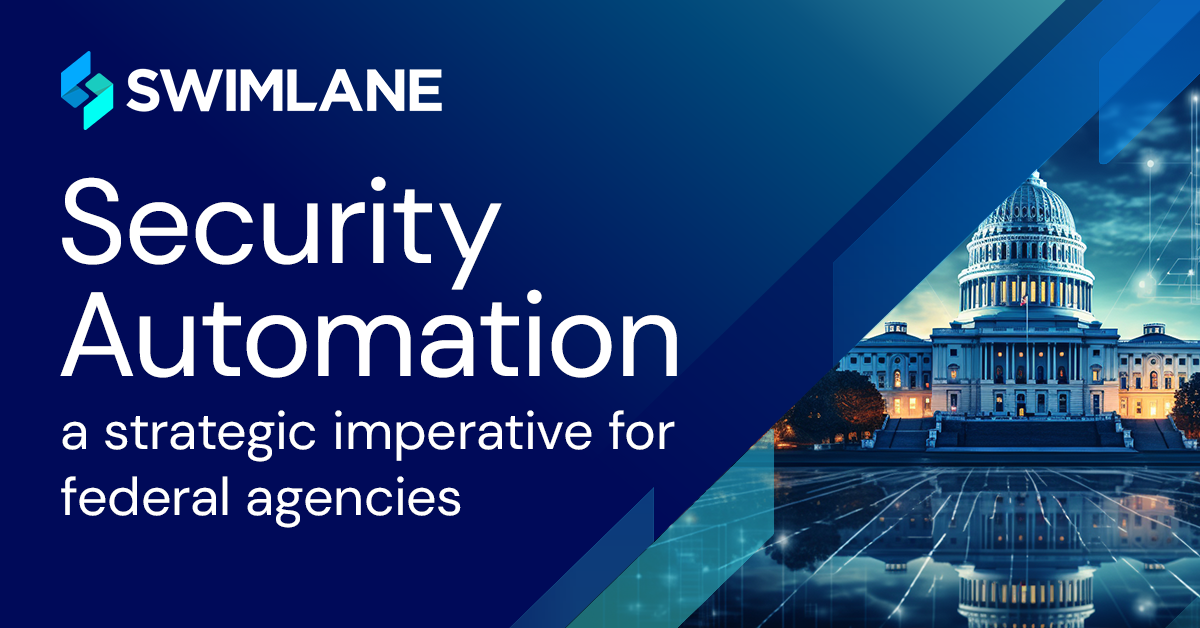As a nation we’ve found ourselves at a pivotal cybersecurity crossroads. We see advanced persistent threats (APTs) pose risk to vital infrastructure. Nation-state threats continue to increase in frequency and sophistication. It is only a matter of time until offensive artificial intelligence (AI) becomes common. With this complex threat landscape, it’s no wonder that cybersecurity is universally recognized as a matter of national security and is the spotlight.
In early 2022, the Biden Administration issued M-22-09 and M-21-31 which required that all federal agencies comply with Zero Trust standards by the end of fiscal year 2024. Implementing security orchestration automation and response (SOAR) technology is one of the standards required by the administration. The clock is ticking on the 2024 deadline, the question is – are we ready?
We partnered with Dimensional Research, a leading independent research firm, to answer this very question. We surveyed over 100 security professionals and executives at U.S. federal agencies in order to understand how confident they are in their ability to meet the Zero Trust executive order. Highlights from the survey include:
- 67% of federal government agencies are confident or very confident they are prepared to meet the Zero Trust requirements laid out by the U.S. government.
- 64% of federal agencies said they are choosing low-code security automation solutions.
Keep reading below for key takeaways and download the 2023 Report on Security Automation for Federal Agencies to unveil why security automation is a necessity. And connect with me on LinkedIn to share your perspectives.
Key Takeaways for U.S Federal Agencies
Federal Security Teams Are Understaffed
It comes as no surprise that our research validated that SecOps teams within the federal government are understaffed. They are expected to investigate and remediate thousands of alerts on a day to day basis, while doing their best to keep stay informed with evolving mandates and regulations. Many public sector security leaders have come to the conclusion that it is highly unlikely they will fill the open positions on their teams.
- 83% of federal agencies have security team positions currently open.
- 64% of federal agencies said it takes longer to fill a security position than it did two years ago.
- 35% of federal agencies don’t think their security team will ever be fully staffed.
Security Automation is a Necessity
I spent a significant portion of my career in IT and security roles at the Department of Homeland Security (DHS) and the U.S. Defense Information Systems Agency (DISA). This experience is an underlying reason why I have so much conviction in the fact that security automation is required for effective SecOps. This isn’t just my personal opinion. Security automation capabilities are considered a “practical necessity” for enhancing overall cybersecurity effectiveness in the Biden Administration’s M-22-09.
Not all Security Automation is Created Equal
The survey revealed that 64% of federal agencies are choosing low-code security automation solutions to meet the SOAR requirements in the Zero Trust executive order. Low-code technology combines the simple user experience of a visual programming language with the power of python scripting. This approach to security automation offers many benefits that 99% of federal agency survey respondents agree on. See the diagram below for details.

The Benefits of Low-Code Automation for Federal Agencies
- 49% of participants said it leads to less reliance on coding to automate.
- 40% of participants said they were able to address all security automation requirements.
- 38% of participants said that the capabilities of these solutions scale with the experience of their security team.
Start Your Security Automation Journey
It’s not too late to get started with low-code security automation and meet the Zero Trust executive order deadline. When you’re ready, reach out to us and we will share best practices learned from our federal customers and show you a demo of Swimlane Turbine in action.

2023 Security Automation Report for Federal Agencies
Get insights from this survey of over 100 security professionals and executives at U.S. federal agencies on the challenges of meeting the 2024 deadline to meet the Zero Trust executive order from the Biden Administration.

